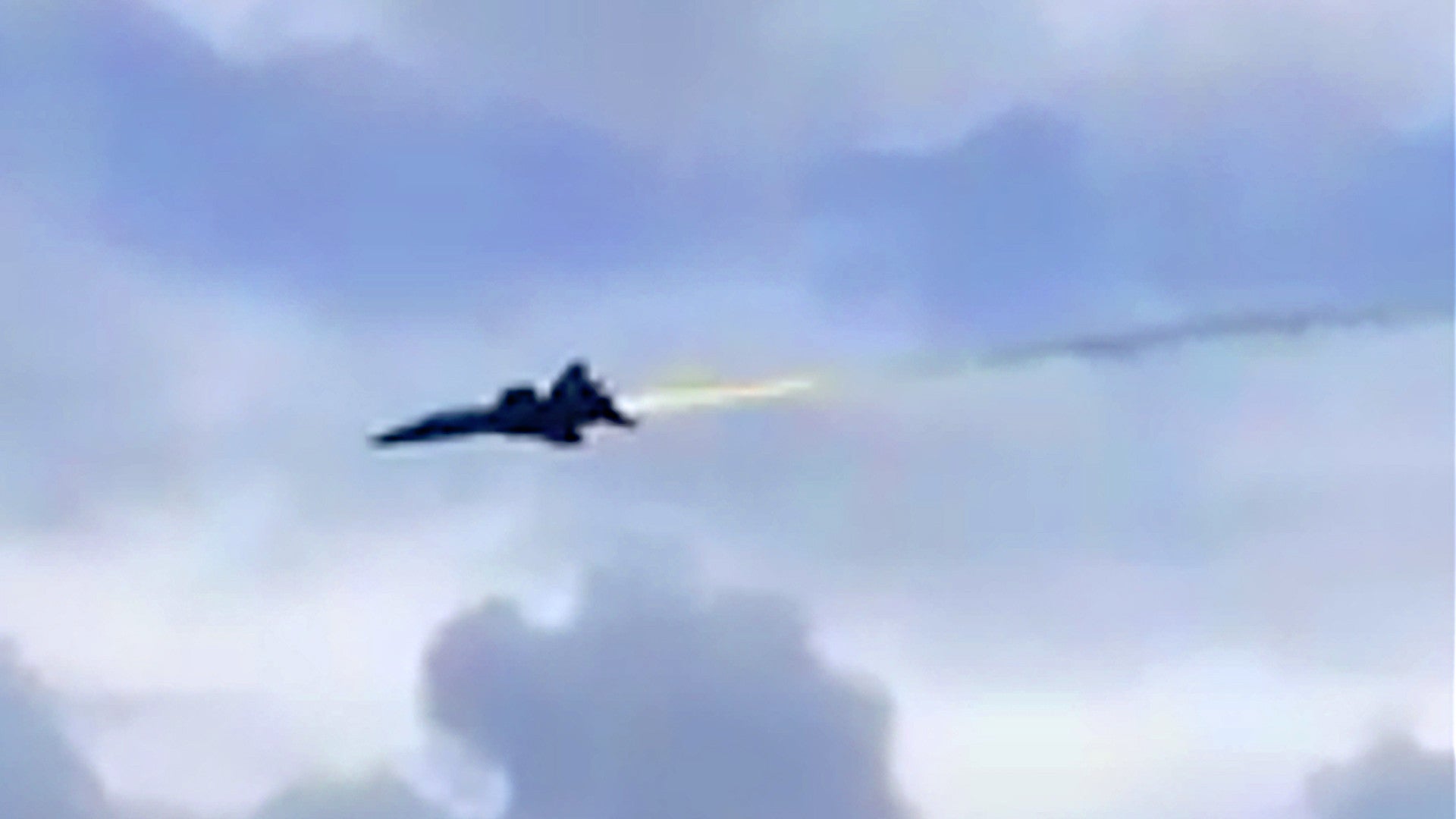Maintenance crews from the Blue Angels are still assessing the damage to one of the U.S. Navy aerial demonstration team’s F/A-18 Hornets after a bird got sucked through one of its engines during a recent show. With the unit’s lead solo #5 jet flying low, a spectator at the Vero Beach Air Show was able to capture the dramatic moment at which the mishap occurred, which resulted in flames streaking out behind the aircraft.
The incident occurred on April 21, 2018 at the Vero Beach Air Show in Florida. Catherine Caddell, the show’s director of marketing, initially told local reports that the accident had caused an estimated $1 million in damage, which would make it a Class B mishap according to the U.S. military’s official definitions. U.S. Navy Lieutenant David Gardner, a spokesman for the Blue Angels, later said that the accident was under investigation, that there was no official cost estimate, and that it was unclear when the jet would be flyable again. The pilot was able to make an emergency landing and did not suffer any injuries.
“Bird strikes are fairly common,” Gardner added in a statement to the Pensacola News Journal after the accident. “Our pilots, and all naval aviators, are trained to deal with any number of contingencies that could occur during flight, including bird strikes.”

According to a recent investigation by Military Times, between 2011 and 2017, “wildlife strikes” accounted for approximately 8 percent of all Class A, B, and C mishaps. The nearly 520 incidents resulted in around $182 million worth of damage in total.
The accident comes as the U.S. military as a whole is seeing a worrisome spike in aviation mishaps, including a spate of incidents earlier in April 2018 that killed seven aviators in the space of just 96 hours. In 2016, the Blue Angels themselves suffered a deadly crash during a practice session that claimed the life of Captain Jeff Kuss who was flying the #6 jet at the time.
This latest incident could easily have been much worse. Slow, high-alpha type maneuvers, such as those practiced by the Blue Angels solos, can leave pilots particularly vulnerable to a catastrophic loss of power. At low altitudes and at the bottom edge of the aircraft’s performance envelope, there is little opportunity to try and recover from such an incident.
In 2014, a Canadian pilot, Brian Bews, in a CF-18A+ Hornet experienced just such a situation during a practice run for an air show at the county airport in Lethbridge, Alberta. With no power in one engine and flying less than 300 feet off the ground, Bews ejected to safety as his fighter jet rolled over and slammed into the ground in a ball of flames, as seen in the video below.

Thankfully, the bird ingestion happened while Blue Angel #5 wasn’t in such a vulnerable state. It’s a relatively welcome report in what has already been a terrible year for U.S. military aviation. At the time of writing yet another crash has occurred just today, this time involving an F-16 from Luke Air Force Base in Arizona.
Contact the author: jtrevithickpr@gmail.com
